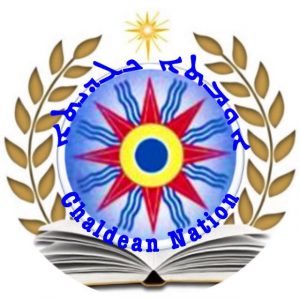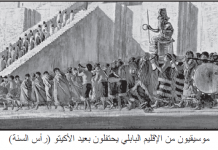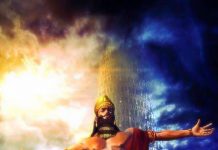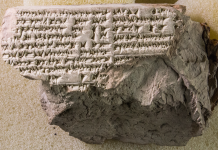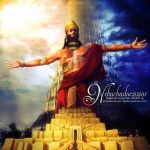The Chaldean Renaissance: Basic Outline of a Vision
By Bishop Dr. Sarhad Y. Jammo
I- Dialectic of the Contemporary Situation:
1) Observing the Chaldeans Themselves:
A fair observer must conclude that Chaldeans of our generation are enduring a situation of regress and fragmentation; the main reason and cause is the general Chaldean attitude toward themselves, reflected particularly by their own leaders and hierarchs in their guidance to their flocks. Humanly, it is much easier to follow the current waves, submit to the tyrants, lapse into laziness, becoming followers of the mighty, beggars from the rich, and mercenaries to the rulers. In concrete terms: having ourselves neglected our forefathers’ cultural and ecclesial treasures, the dignity of our call, the greatness of our civil and religious heritage, resorting to borrow concepts and practices from nations and churches, we have become available to the outsiders’ conquest.
This is where we stand today:
a) Ecclesiastically: Our Patriarchal Seminary, our monasteries and convents, our clergy and parishes, our liturgies and religious culture are heavily Latinized, Arabized, Syrianized, Kurdishized, or anything else except being genuinely and proudly Chaldean.
b) Civilly: Our people and lay institutions, by their own weakness and under the influence of our ecclesiastic hierarchs and institutions, have chosen to a large extent to neglect and disregard their national identity, their language, their rights and their dignity. For many Chaldeans, enlisting and serving as Arab, Kurd, Communist…etc. was and remains a practiced endeavor.
c) The Assyrian Factor: Assyria is an important region of Mesopotamia, and for several centuries succeeded in becoming a mighty empire, with Nineveh as its capital. As such, Assyria is an important segment of Mesopotamia at large and of the Chaldean heritage which succeeded it. Recognizing that solid historic fact and appreciating it should be the obvious attitude of every knowledgeable Chaldean. The point is that the colonial offices of the British Empire, in collaboration with the missionaries of the Archbishop of Canterbury, misused this historic reference, cutting it from its context, and employed it to consolidate the split inside the Chaldean church and people, by promoting an “Assyrian” identity, distinct and separate from the Chaldean, for their own imperial purposes.
In the past three decades, while the Chaldeans were presenting their services to the ruling parties of Iraq, Assyrian political parties and organizations were offering their zealous loyalty to different regional powers, mostly to Kurdistan, ending up with the adoption of a formula (“Chaldean Syriac Assyrian”) that dilutes substantially any serious national meaning and claim, reducing it to the acceptance of submission to the mighty in exchange for protection and personal gain.
2) Observing the Arab-Muslim majority of Iraq:
They regard Chaldeans with official respect and appreciation, but an activist fanatic minority of them persist in persecuting Chaldeans, and other Christians, for the past several decades, pushing them to flee their ancestral land in continuous waves of exodus, ending up with the majority of Chaldeans settling in western countries, 200,000 of them in the USA alone.
3) Observing the Kurdish sizable minority of Iraq:
While providing physical security to Chaldeans and other Christians in the Kurdistan Region, they deny Chaldeans their basic national rights, submitting them to serve the Kurdish national agenda. They have already succeeded in making many Chaldean and Assyrian parties and activists their own mercenaries.
II- Who are the Contemporary Chaldeans?
Contemporary Chaldeans are: a) the descendants and main remnant of the ancient inhabitants of Mesopotamia: the Sumerians, the Akkadians, the Babylonians, the Assyrians, and most of all the Chaldeans. b) Their language is the Chaldean, i.e. the vernacular, Aramaic of Mesopotamia, being in continuous use for the past 3000 years until the present time. c) They are the heirs of successive Mesopotamian civilizations, particularly of its spiritual heritage, as represented by the Patriarch Abraham of Ur of the Chaldeans, and as frequently referred to in the Holy Scriptures both the Old and the New Testament, as embodied as well, in regard to Christian heritage, in the Chaldean Catholic Church of the East.
The authenticity of the Chaldean nomenclature and its substance are based on the following historic facts:
a) The Aramaic linguistic form, used commonly by the Chaldeans up to date, and only by them, was until modern times a spoken but unrecorded dialect, i.e. a grammatical vernacular taught solely by parents to children. While the ancient Assyrian language is the Akkadian dialect of the Nineveh region, which ceased to exist, the Chaldean, ancient and recent, is not the Akkadian of Babylon that disappeared, but the Aramaic vernacular of Mesopotamia which constitutes the cultural continuity and the vital core of national identity up to our day.
b) The Chaldean Empire is the last and most glorious indigenous state that ruled over all Mesopotamia (612 BC to 538 BC), before it fell under the successive invading foreign powers. With that 74-year rule, Nineveh gradually became deserted ruins and Assyria became a region within the Chaldean Empire. This historic and documentable fact means for the following history that Assyria, with its great heritage, was absorbed by the succeeding Chaldean nationality and culture.
c) The City of Babylon, famous capital of the Chaldeans, was the historic core and international center of Mesopotamia through the millennia, where after the Chaldean rule, Qurish the Persian reigned, where Alexander the Great died, in whose vicinity the Parthians had their imperial court, etc., ending with Baghdad as the splendid capital of the Abbasids, and continuing to be the central city of Twin-River-Land for many centuries until modern-day Iraq. Even the ecclesiastic center of the Church of the East settled on the Patriarchal title of Babylon.
d) Commonly and Constantly through the centuries, before Christianity and after, the Chaldean name has been the ethnic and cultural expression used by historians to indicate national identity of indigenous Mesopotamians; thus did the liturgical Hudhra, the Greek writers, the Arab hagiographers, the European travelers, and the Christian hierarchy of the Church of the East in all of its branches, including the last Patriarch Shimun XXIII of Qochanis, as shown by his inherited patriarchal seal.
III- What is the Chaldean particularity among the nations?
The comprehensive history of humanity might be traced back hundreds of millennia and to different regions of the earth. Nevertheless, the philosophical and theological birth and early formation of that history is traced to Mesopotamia proper, the cradle of civilization. As narrated in the Book of Genesis, in the Epic of Gilgamesh, in the archaeological records of the cities of Ur, Uruk, and Babel, located in middle and south Mesopotamia, the foundation of human civilization was pioneered remarkably in that region, including the description of a primordial paradise, the audacious attempt to reach heaven by the Tower of Babylon, the awareness of evil in human life, the yearning for immortality, the formation of moral conscience, and the belief in one God, creator of the universe and master of history, as reported in the call of Abraham to become the vehicle for universal divine favor and salvation.
This entire endeavor has been accomplished by the dwellers of South Mesopotamia, whose legacy was inherited by the Chaldeans, who themselves dwelt and ruled the same land. Jesus Christ, the Son of David, the son of Abraham, is the fulfilling core of that Providence or Plan of God for redemption. Contemporary Chaldeans must be aware of their permanent connection to that divine call and its actual implications. Obviously, any noble prince, shying away from the obligations of his status, will end up losing it. Contemporary Chaldeans are able, if sensitized, to recognize the divine call addressed to their forefathers, and therefore to their nation, then claim it, accept it, and be enriched by it, making it a blessing for many.
IV- Middle and South Mesopotamia as the geographic sphere of the Chaldeans’ historic achievement and perpetual reference.
A clarification, from the Chaldean point of view, is needed in regard to the meaning of the term Mesopotamia. Obviously, the general meaning is the land of the Twin Rivers Tigris and Euphrates. Nevertheless, only Middle and Lower Mesopotamia –contained roughly in today’s borders of Iraq– maintained through history a continuous historic, cultural, and administrative unity, as the basic reference of enduring identity. Upper Mesopotamia, including Edessa and Nisibis, belonged in ancient times, up to modern periods, to the Greek, Roman, Byzantine, Arab, Mongolian, and Turkish empires and cultures. East and Northeast of Mesopotamia, the land of the Medes and the Persians, were ruled since ancient times by different mighty empires with a different language and culture. Therefore, Middle and Lower Mesopotamia, with Babylon and Nineveh as its major cities, are the historic spheres of achievement and concrete references for Mesopotamian national identity. Most of all, the glorious city of Babylon remains for all Chaldeans the glorious perennial symbol of their ancestors.
A clarification also is due regarding the Chldean language, spread to many areas in the Near East and Middle East, between the 10th Century BC and 7th Century AD, including Upper Mesopotamia in modern Turkey and Western Persia in modern Iran. The Aramaic Vernacular of Mesopotamia Proper (Middle and South) is remarkably different, up to date, from the dialects used in the Tur’Abdin area (Turkey) or in Urmia (Iran). Therefore, this linguistic difference should be taken into serious consideration, in addition to other historic, geographic, and political factors, whenever we deal with the issue of a Mesopotamian identity and related belonging, as applied to these regions and their communities with due respect to all.
V- What is the goal of the Chaldeans and how to reach it?
1) The goal of the Chaldeans is to survive and thrive while preserving their identity and growing in it civilly, culturally and spiritually:
a) Civilly, by claiming and pursuing the recognition of their national rights in their homeland, lraq, and everywhere in the world, in order to grow in it.
b) Culturally, by promoting their Chaldean language and art, adapting them to modern times, using them as the international communication medium and joint among all Chaldean communities.
c) Spiritually, by accepting the divine call to minister a pivotal role in the history of divine salvation as entrusted to Abraham, their national hero and vocational symbol. Thus, to claim the perennial Scriptural and Apostolic heritage of the Church of the East, make it a powerful legacy, and share it with many thirsty souls.
2) How do we Reach that Goal in Today’s Situation?
By enacting a process of Chaldean Renaissance, through a fresh response to the historic divine call; Let us build a new Babylon (Bab’el):
1) By relying basically on their inner conviction, free and noble Chaldeans, wherever they are in the world, do and shall reclaim their Chaldean national identity with all of its civil rights and duties. This reclaim is the Chaldeans’ historic right and native prerogative.
2) By nourishing awareness of the Chaldean cultural and spiritual components of identity, particularly of the call to respond to the divine plan of salvation, revealed and made known in the Holy Scriptures, following the example of Patriarch Abraham.
3) By appreciating our Mesopotamian Chaldean language in both of its forms the Classic and the Vernacular –which is neither Syrian nor Syriac– liberating its grammar and pronunciation from foreign distorting applications, then teaching and adopting them for all sectors of life.
4) By establishing an international institution to gather together representatives of our dispersed communities, uniting them to understand themselves and their call, and design a course of action accordingly.
5) By establishing free media to proclaim genuine Chaldean identity and culture.
6) By being ready, in the name of common Mesopotamian heritage, to deal with all free, noble and willing Assyrians wherever they are and the Syriacs of Iraq, to forge a common national front, based on mutual recognition and appreciation, in the prospect of a united future.
7) Being open to all genuine Iraqis to share with them the authentic civil, cultural, and spiritual legacy of ancient Mesopotamia.
